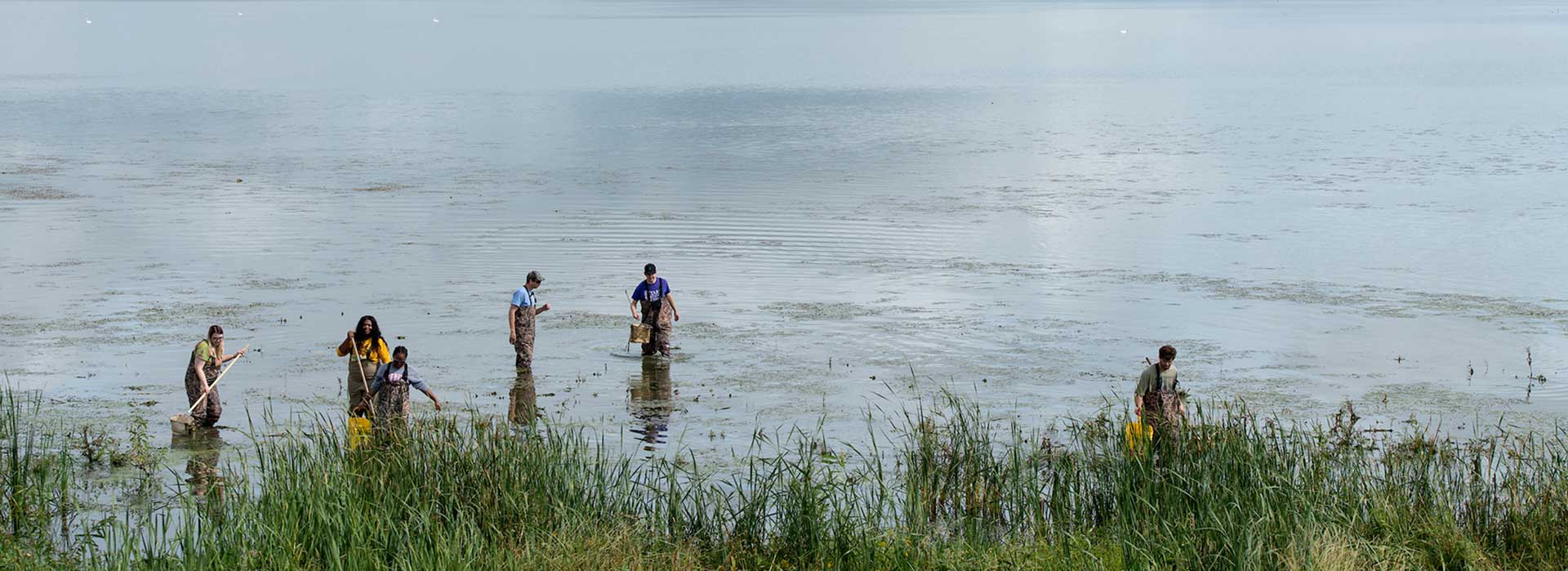What is a field station?
Field stations serve as platforms for multiple researchers seeking to understand the environment in which they are embedded. Traditionally, many field stations have focused on the physical or natural sciences, however, they should not be limited to these disciplines. The settings of many field stations lend themselves well to creative works and research in visual arts, writing, sociology, anthropology, and economics, among other disciplines.
Field stations are often used to give students hands on experience in their discipline. This can be done in a number of ways. Short field trips can be used to put a face on a case study. Courses can be built around a project or theme exemplified by the setting of the field station and can utilize short field trips to gather samples, experiences, and observations. Collaborative research between a student and faculty mentor can benefit both parties, with students gaining experience and confidence from being involved in real research.
What is the Therkildsen Field Station?
The Therkildsen Field Station at Emiquon (TFSE) is part of the University of Illinois-Springfield (UIS). Located within The Nature Conservancy’s Emiquon Preserve, the TFSE is ideally situated to provide researchers and students of all ages with an opportunity to study, explore, and learn from this unique floodplain restoration project.
The Therkildsen Field Station includes two laboratories, a classroom, a conference room, kitchen facilities, and housing for between 10-12 residents. Additionally, the TFSE holds a variety of field and laboratory equipment to assist with studying the surrounding environments.
Where is the Therkildsen Field Station?
In the Emiquon Preserve, between Havana and Lewistown, IL. From the UIS campus it is approximately an hour and fifteen minute drive to the northwest. Visit Emiquon and find travel support for UIS courses and projects.
Why is the Therkildsen Field Station there?
To connect researchers and students to the Emiquon Preserve. The Emiquon Preserve (link opens in new window) is a restoration project being carried out by The Nature Conservancy. Their goal is to return land which had been put into agricultural, back into a functioning floodplain/wetland. The system is dynamic and evolving, and thus provides a wealth of research opportunities.
What kinds of projects can be pursued at the TFSE?
All kinds, and remember: projects do not need to be conducted exclusively at the Field Station. Come and collect–ideas, samples, surveys, inspiration, and images–and then return to your lab, classroom, office, or studio on campus to complete the project. A tremendous diversity of projects exist, and the best thing to do is get in touch with the Director to explore ideas, options, and feasibility. Here is a short list of some broad topics to get you thinking:
- Images of the Preserve through the seasons
- Economic impact of the restoration on surrounding community
- Develop activities and lesson plans for k-12 users
- Catalog insect biodiversity in the restored prairie
- The role of the Illinois River
- Build an ROV to examine and sample the lake bottom
- Examine the history of the Emiquon area in a particular era
- Nature writing or poetry
- Track muskrat hut abundance over time from aerial imagery
- Who visits and uses the Preserve?
How can I involve students with projects?
Field trips can bring classroom lessons to life. Lectures, slide shows, and videos are great, but cannot replace physical experiences. Take a day-trip to the Field Station and allow your students to explore and gain experience. These trips can be simple “look and see” experiences or could take the form of mini-research projects.
Another great way to utilize the Field Station while involving students is to teach the process of research and creation. Involve your students with conducting pilot studies and even full research projects. Students can provide extra eyes, ears, and hands when out in the field. On campus students can assist with literature reviews and searches. These can even take the form of course assignments. In designing projects think in terms of scale:
- What is interesting within a course? Think in terms of projects that can be introduced, carried out, and reach a reasonable end-point within a semester long course.
- What is interesting over a undergraduate career? If you work with students on honors projects, capstone projects, or STARS projects, you might be able to collaborate on long-term (1-3 years) projects, including those that span multiple generations of students.
- What “big” picture story can you construct from a succession of student projects?
Are there any funding opportunities?
We currently have a Student Grants program to support student research in the Emiquon Preserve and its surrounding areas. We also maintain a list of other funding opportunities for students. UIS also has funding options for both students and faculty carrying out research.
UIS Faculty interested in bring courses to the TFSE should apply for travel support.
This sounds great, what should I do next?
Explore our webpage, and then contact the Director with questions and to plan your visit. If you’d like to make a visit to check things out before bringing students or starting your project, this can also easily be arranged.
